- Ballot-marking devices increase the chances of voting errors
- Incidents in the 2024 election highlight concerns over ballot-marking devices
- The General Assembly should require all counties to use hand-marked paper ballots
Incidents in other states in the November 5 election have highlighted problems with ballot-marking devices (BMDs): touchscreen voting machines that produce a small paper ballot that is then fed into a tabulator. Those incidents remind us why every North Carolina county should switch to hand-marked paper ballots.
Problems with Ballot-Marking Devices
As the John Locke Foundation noted in our review of the 2020 election (starting on page 51), North Carolina has had an unhappy history with touchscreen voting systems. Those problems included 436 lost votes in 2002 and 4,530 lost in 2004. In 2018, Guilford County voters reported that the machines were switching their votes, a problem election officials attributed to the devices being over a decade old.
In response to those problems, the General Assembly passed House Bill 836 in 2015 almost unanimously. Among other changes, the bill required that touchscreen voting systems “which do not use paper ballots shall be decertified and shall not be used in any election held on or after September 1, 2019.” Counties can still use BMDs since they produce paper ballots.
BMDs have their problems, however, as noted in Locke’s report:
- “[T]he constituent’s official tabulated votes are not the choices printed on the ballot. Instead, the official vote is embedded in the ballot’s [bar] code. A human being cannot read that code, so voters cannot review their official votes.”
- “[V]oters are unlikely to notice errors made by BMDs. A University of Michigan study found that ‘voters missed over 93% of errors on printed ballots that they filled out using BMDs.’ Even when voters complain about BMDs altering their choices, election officials have no way to tell if the BMD malfunctioned, if it was hacked, or if it was human error.”
- “BMD systems make it more difficult to audit election results and detect problems within the election system.”
The General Assembly missed an opportunity when it allowed counties to continue using BMDs.
More Problems with BMDs in 2024
Several incidents this year have underscored the problems with BMDs.
Perhaps the most noteworthy moment is a viral video showing a BMD in Kentucky changing an attempt to vote for Donald Trump to one for Kamala Harris. Officials from the Kentucky Attorney General’s Office could recreate the error on the BMD on their first attempt but could not recreate it on their second. That particular machine has been taken out of service.
A local newspaper in southern New Jersey reported similar problems with BMDs there, but an election official there attributed them to “instances of user error” and urged voters to check their printed ballots before putting them in the tabulator. Voters in Maryland also reported problems, although the state elections board attributed them to voter errors.
Those incidents highlight the problems inherent to BMDs noted in Locke’s report: voters not seeing their official vote, errors on the ballots remaining undetected, and an inability to determine the source of errors on the ballot conclusively.
You never hear about any of those problems with hand-marked paper ballots.
PBS’s News Hour noted other problems with BMDs in a September 27 report, including vulnerabilities to hackers before and during the voting process. That prompted the reporter to mention, “I guess it seems ironic that the best computer scientists in the world will tell you, ‘The best technology for an election is pen and paper.’” In short, paper ballots cannot be hacked.
All North Carolina Counties Should Use Hand-Marked Paper Ballots
There is some good news for North Carolina voters. The number of counties using touchscreen voting systems has declined. In 2018, 22 counties used touchscreen voting machines for early voting, and 20 used them on election day. Prompted by House Bill 836, many counties switched for the 2020 election, with only 11 using them for early voting and seven on election day.

The green counties use BMDs for early voting, while the rest use hand-marked paper ballots. Source: North Carolina State Board of Elections
Unfortunately, there has been some backsliding since then. In June 2023, Buncombe County commissioners approved the purchase of BMDs for early voting. Catawba County switched to BMDs for early voting before the 2022 election, but officials decided to give voters the option to use hand-marked paper ballots in the 2024 general election.
The number of counties using BMDs on election day remains unchanged from the seven that used them in 2020.

The green counties use BMDs for election-day voting, while the rest use hand-marked paper ballots. Source: North Carolina State Board of Elections
Given the problems with BMDs, the General Assembly should require all counties to use hand-marked paper ballots. The BMDs currently in use are relatively new, however. Out of respect for taxpayers, the counties that currently use them should be allowed to continue to do so through the 2030 election.
It would not be a clean break from BMDs, however. Every county must use both BMDs and hand-marked paper ballots; there is no way around that. The former are required by the Americans with Disabilities Act and the Help American Vote Act for in-person voting for those with disabilities that prevent them from using regular ballots, while the latter are required for those voting absentee by mail.
Given those caveats, the General Assembly should complete the move it began a decade ago and require all counties to use hand-marked paper ballots for most voters.
